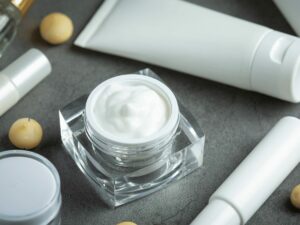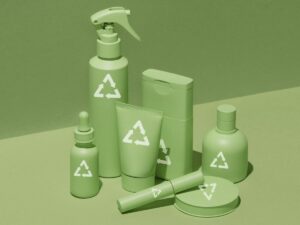Wondering how to elevate cosmetic products to the next level? The key lies in understanding the art and science of cosmetic formulation, a crucial aspect for businesses aiming for excellence in a competitive market.
With years of experience in cosmetic chemistry and a deep understanding of market trends, our insights offer valuable guidance for going through the complex world of cosmetic formulation.
Cosmetic formulation combines creativity with scientific precision to create products that not only look and feel luxurious but also meet the highest standards of safety and efficacy.
In this ultimate guide, we’ll delve into the essentials of cosmetic formulation from ingredient selection to the latest innovations in manufacturing processes.
Read on and dive into more discoveries!
Cosmetic formulation is the backbone of the beauty industry where science and creativity meet to create products tailored for various skin types and purposes. It involves selecting appropriate ingredients that not only provide desired effects such as moisturizing, anti-aging, or sun protection but also ensure product stability and safety for consumer use.
At its core, formulation requires a deep understanding of how different components interact with each other and with the skin. Here’s the interesting part, this includes emulsifiers to blend oil and water, preservatives to extend shelf life, and active ingredients to deliver benefits. Mastering these basics is essential for developing products that stand out in the competitive cosmetics market.
Building on the foundational knowledge of cosmetic formulation, it’s crucial to understand the type of cosmetic products and their unique formulations. Let’s break down some of the main categories:
Lightweight and often hydrating, lotions are formulated with a balance of water and oils to moisturize the skin without a heavy feel. Emulsifiers are key to keeping the formula mixed, and preservatives ensure longer shelf life. Additionally, lotions may include fragrances and botanical extracts to enhance the user experience and provide additional skin benefits.

Designed to cover imperfections, concealers have a thick, pigmented formula. But that’s not all, they blend various colorants with emollients and silicones to provide a smooth application that adheres well to the skin. To cater to different skin types, concealers are also formulated to be non-comedogenic and offer varying levels of coverage.
Richer than lotions, creams combine a higher concentration of oils and butter for intense hydration. They often incorporate active ingredients aimed at specific skin concerns, such as anti-aging or brightening. Creams are also designed to create a protective barrier on the skin, helping to lock in moisture for longer-lasting hydration.
Lipsticks merge waxes, oils, and pigments to create a product that delivers color, texture, and sometimes treatment benefits to the lips. As a matter of fact, the balance of ingredients affects lipstick’s hardness, application, and finish.
This broad category includes a variety of products from foundation to eyeshadow, each with its unique formulation. Foundations, for example, can range from liquid to powder, requiring different bases and pigments to achieve the desired coverage and skin tone match.
Typically used to set makeup, control shine, or provide color, powders are a blend of mineral ingredients and pigments. They can be pressed or loose and often include talc or mica as base materials. Advanced powder formulations are developed to offer a lightweight feel and minimize the appearance of pores, providing a flawless finish.
A complex formulation of solvents, polymers, and pigments, nail polish is designed to be durable and quick-drying. The formulation must ensure a smooth application, a glossy finish, and long-lasting wear. Moreover, nail polishes now come in a variety of finishes, from matte to glitter, catering to diverse consumer preferences.
Having explored the various types of cosmetic products and their unique formulations, it’s essential to get into the thorough process behind creating these beauty solutions. Here are the critical stages in the process:
The journey begins with an idea. This initial phase involves understanding market demands, identifying gaps in current offerings, and conceptualizing a product that meets these needs. Market research informs the formulator about trends, consumer preferences, and competitive products. For instance, the rising demand for vegan and cruelty-free products has led to the development of lipsticks using plant-based wax ingredients.
Once the concept is clear, the next step is selecting the right ingredients that will make up the product. This involves choosing active ingredients that deliver the product’s promised benefits such as hyaluronic acid for hydration or salicylic acid for acne treatment. Formulators must also consider the use of emulsifiers, preservatives, pH adjusters, and fragrances, ensuring that each component is compatible and safe for use.

With a list of ingredients in hand, formulators create small batches of the product, known as prototypes. This stage allows for experimentation with different concentrations and combinations of ingredients to achieve the desired texture, efficacy, and stability. And on top of that, prototyping is a trial-and-error process often requiring multiple iterations to refine the product’s formulation.
After developing a promising prototype, the formulation undergoes thorough stability and safety testing. Stability testing assesses how the product fares under various conditions over time, including changes in temperature, light, and humidity. This ensures that the product maintains its efficacy and appearance on the shelf. Safety testing involves evaluating the product’s potential for irritation, allergies, and toxicity.
The final step in the formulation process is scaling up the prototype for mass production. This phase requires transitioning from laboratory-scale batches to large-scale manufacturing, which can introduce new challenges in maintaining product consistency. The scale-up process involves careful planning and adjustment to production techniques ensuring that the final product remains true to the prototype in terms of quality.
Following the process of formulating cosmetics, it’s important to turn attention to the regulatory landscape that governs these products. Let’s see the critical aspects of regulatory considerations and compliance:
ISO 22716:2007 provides guidelines for the production, control, storage, and distribution of cosmetic products, emphasizing good manufacturing practices (GMP). It aims to ensure product safety and quality by establishing standards for every phase of the product lifecycle. Compliance with ISO 22716:2007 is crucial for cosmetic companies looking to demonstrate their commitment to operational excellence and consumer safety.

The Federal Food, Drug, and Cosmetic Act (FD&C Act) in the United States sets the foundation for the regulation of cosmetic products, ensuring they are safe for consumer use and properly labeled. It grants the Food and Drug Administration (FDA) the authority to oversee the safety of cosmetics, prohibiting the marketing of adulterated or misbranded products.
The Fair Packaging and Labeling Act requires all consumer products in the United States, including cosmetics, to have truthful, informative labeling. It ensures that consumers receive comprehensive information about the product, including its net contents, identity, and manufacturer’s information. This act plays a key role in fostering transparency and trust between cosmetic companies and consumers.
Regulation (EC) No 1223/2009 harmonizes cosmetic product regulations across the European Union, setting high safety standards. It mandates that all cosmetic products must undergo a thorough safety assessment before being placed on the market. Nako Cosmetics naturally complies with this regulation, underscoring its dedication to safety and quality in all its product offerings.
The Food and Drug Administration (FDA) is responsible for protecting public health by regulating cosmetic products in the United States. It ensures that cosmetics are safe for use and that their labeling is accurate and not misleading. The FDA’s oversight is critical to maintaining consumer confidence and safeguarding the cosmetic market’s integrity.
Following the discussion on regulatory considerations and compliance, it’s clear that innovation within these boundaries is key to the industry’s future. Let’s explore the forefront of cosmetic science:
The clean beauty movement emphasizing non-toxic environmentally friendly formulations continues to gain momentum. There is an increase in seeking products free from harsh chemicals preferring ingredients that are both safe for the clients and the planet. Companies, like Nako Cosmetics are also adopting eco-friendly manufacturing processes to reduce their carbon footprint.
Biotechnology is transforming cosmetic formulation enabling the creation of novel ingredients with enhanced benefits. According to the data of Precedence Research, the global biotechnology market is expected to be worth around USD 4.25 trillion by 2033. This technology allows for the development of peptides, enzymes, and antioxidants that are more effective in skin repair, anti-aging, and moisturizing.

Personalization is becoming increasingly important in the cosmetics industry driven by a desire for products tailored to specific needs and preferences. This trend is facilitated by digital technologies that enable precise skin analysis and product customization at scale. Additionally, utilizing digital tools for product development and testing can streamline the formulation process reducing time to market and enhancing product appeal.
There is a growing demand for multifunctional cosmetic products that offer more than one benefit reflecting a desire for convenience and value. This has led to the development of products that combine skincare, makeup, and protective functions, such as moisturizers with SPF or foundations with anti-aging properties. For businesses, this trend necessitates a focus on innovative formulation strategies that can make quality products.
| Strategy | Description |
| Innovative Formulation Techniques | Implementing innovative formulation techniques allows for the integration of multiple benefits into a single product, such as combining skincare ingredients with makeup formulations to create multifunctional cosmetics that offer convenience and value to consumers. |
| Targeted Ingredient Selection | Selecting targeted ingredients with multiple benefits, such as moisturizing agents with SPF protection or anti-aging compounds in foundations, enables the creation of multifunctional cosmetic products that address specific consumer needs and preferences effectively. |
| Advanced Delivery Systems | Incorporating advanced delivery systems, such as encapsulation or microencapsulation, facilitates the effective delivery of active ingredients in multifunctional cosmetics, ensuring optimal efficacy and performance across various skincare and makeup functions. |
| Customizable Formulations | Offering customizable formulations allows consumers to tailor multifunctional cosmetics to their individual preferences and concerns, providing versatility and flexibility in addressing diverse skincare and makeup needs with a single product. |
| Collaboration with Experts | Collaborating with skincare experts, makeup artists, and dermatologists enables businesses to leverage diverse expertise and insights in developing multifunctional cosmetic products, ensuring high quality, safety, and efficacy to meet consumer expectations. |
As we delve into the future of cosmetic formulation it’s equally important to acknowledge the hurdles that formulators and companies face in this dynamic field. Listed are the significant challenges to encounter:
In what most I see, one of the most common hurdles is finding the sweet spot between using natural ingredients and maintaining the product’s efficacy. Everyone is increasingly drawn to products with natural compositions but these ingredients can sometimes fall short in performance compared to their synthetic counterparts.
The complexity of cosmetic formulation itself presents a significant challenge. Creating a product that is stable, effective, and aesthetically pleasing, while also being safe for a wide range of skin types, is no small feat. This complexity necessitates a thorough understanding of chemistry, microbiology, and the interplay between various components underscoring the need for expertise and precision in the formulation process.

The cosmetic industry is highly regulated with standards that vary significantly across different markets. Staying compliant with these ever-changing regulations can be a hard task for businesses. The challenge lies in continuously monitoring legal updates and adapting formulations. It demands a proactive approach and often requires reformulating products to align with new guidelines which can be time-consuming and costly.
Knowing the challenges of cosmetic formulation, next is the importance of certain strategies and approaches for success. See the following factors for achieving excellence in cosmetic formulation:
The selection and mastery of ingredients are crucial. Knowing the properties, interactions, and regulatory status of each ingredient allows for the creation of innovative and effective products. In similar fashion, it’s important to balance traditional ingredients with new cutting-edge components to deliver unique benefits and differentiate products in the market.
Innovation in formulation techniques can significantly enhance product performance and appeal. For example, enclosing active ingredients can improve their stability and efficacy allowing for a more potent product. This approach can also provide a controlled release of ingredients enhancing the product’s effectiveness and client experience.
Success in the cosmetics industry often involves strategic partnerships and collaborations. Whether it’s with ingredient suppliers, research institutions, or marketing experts, these collaborations can bring in new insights, technologies, and capabilities. For example, partnering with biotechnology firms can provide access to cutting-edge ingredients or formulation techniques setting the products apart in the market.

At the center of R&D is the exploration of new ingredients and technologies. This involves discovering and integrating novel compounds that can offer unique benefits, such as enhanced skin hydration, improved delivery systems for active ingredients, or innovative textures and finishes. I see it’s this adventurous spirit in R&D that can lead to breakthrough products that redefine categories and set new benchmarks in the industry.
For some insightful reads, we’ve curated a list of recommended articles just for you:
Still haven’t found what you’re looking for? Don’t hesitate to contact us. We’re available around the clock to assist you.
Going through the complexities of cosmetic formulation requires a blend of creativity, science, and strategic planning. This comprehensive guide aims to equip anyone with the knowledge and insights needed to excel in this dynamic industry.
Discover how Nako Cosmetics can elevate your product offerings with our expertly crafted formulations and commitment to quality. For more information and future collaborations, contact us today!
Own Your Private Label Cosmetic Line Is No Longer Difficult Here!
Don't let questions and needs hold you back. Reach out to us today.
How to Start Your Beauty Business?